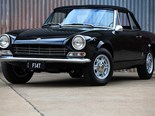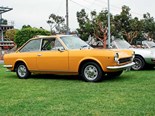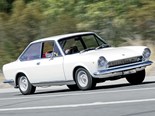Fiat 124 Coupe/Spider - Buyer's Guide



|
The very modern 124 sedan gave Fiat the platform it needed for a sequence of coupes
Fiat 124
With Alfa Romeo and Lancia both selling elegant sports coupes in their armouries, Italy’s most prolific car-maker needed to get involved as well. Fiat for some years had built a range of pretty but slow-selling 1200 cabriolets and coupes with Pininfarina bodywork. It was these which would provide the basis for a new open-top model that could be shuffled almost seamlessly into the124 range.
Appearing in 1966, the very modern 124 sedan gave Fiat the platform it needed for a sequence of coupes and these, just like marrying a second cousin, were sufficiently similar to partner the open-top cars.
Australia saw its first 124AC coupes in early 1968 but sales didn’t start until the following year. The Fiat with its fresh lines and huge glass-house cost $3648 – money that would buy an MGB or GTS Monaro with change left over. By 1976 that price would leap past $7000 and shortly afterwards the 124's reign ended.
| Reader Resto: 1967 Fiat 124 Spider
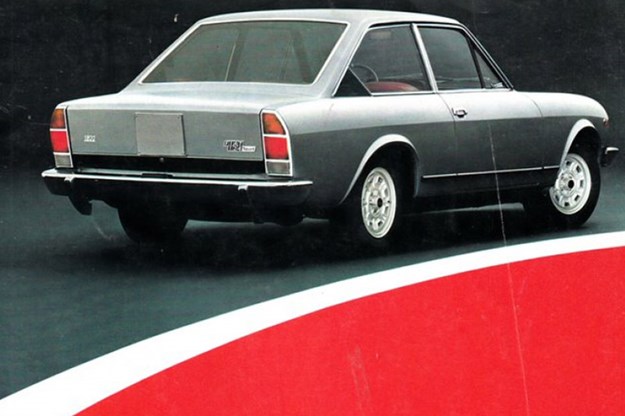
The Fiat came with a five-speed gearbox, four-wheel disc brakes and a twin-cam engine. Media tests confirmed it would deliver a genuine 163km/h top speed, at which point the optimistic speedometer was hovering around 170km/h but the engine wasn’t nudging the fifth gear redline.
More power was the only thing needed when AC became BC in 1970. Early cars stuck with the AC’s 1.4-litre engine but did bring styling changes. The profile with its crisp lines and tiny roof pillars remained unchanged however its distinctive nose with single headlights was replaced by low-slung, paired lights set in a larger grille. In 1971 and accompanied by a slight price increase the Coupe acquired a 1608cc DOHC engine from Fiat’s 125 sedan. Power reached 81kW and top speed was listed at 180km/h.
Two years further into the Coupe’s life-span, Fiat uprated the design for a second and final time. The shape of the 124CC grille changed again and included a raised central section. Standard wheels were steel but optional were attractive Cromodora alloys.
Under the bonnet a 1.8-litre engine from the heavier 132 sedan should have provided a solid power boost but emission-controls slated for 1974 ensured the bigger engine developed only 84kW. Spider versions of the 124 were offered In Europe and the USA but not here. Physically, the car shared nothing with 124 Coupes, having its origins in the Pininfarina-bodied 1200 and 1500 convertibles that were first seen in 1959.
| Reader Rest: Fiat 124 coupe
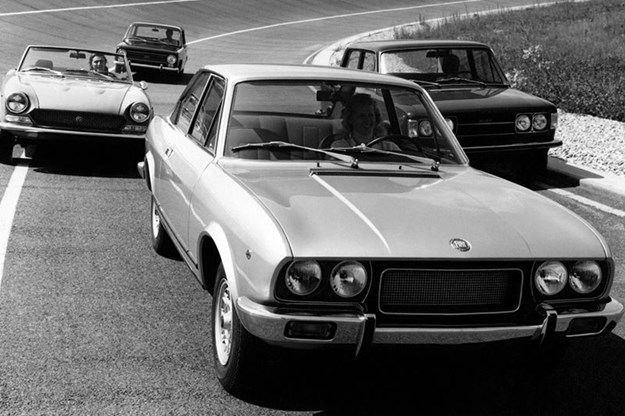
The 1966 restyle brought a modernised shape that even today looks lithe and attractive. The Spider would almost certainly have sold well in Australia and other RHD markets had a suitable version been offered.
After many years of imports, open-top 124s in our market are relatively common. Most came from the USA although some have come via the UK, compounding concerns about rust.
Cars built after 1980 were renamed 2000 Spider and when Fiat stepped out of the North American market, Pininfarina sold the cars itself until 1985 under the ‘Spider Azzura’ name.
Coupes in decent but not outstanding order sell for less than $15,000. Most of the available cars are CC models. Cabriolets span a wide range of years and engine types with the early, small-bumper cars usually worth more than fuel injected models. Values remain generally below $30,000.
With Alfa Romeo and Lancia both selling elegant sports coupes in their armouries, Italy’s most prolific car-maker needed to get involved as well. Fiat for some years had built a range of pretty but slow-selling 1200 cabriolets and coupes with Pininfarina bodywork. It was these which would provide the basis for a new open-top model that could be shuffled almost seamlessly into the124 range.
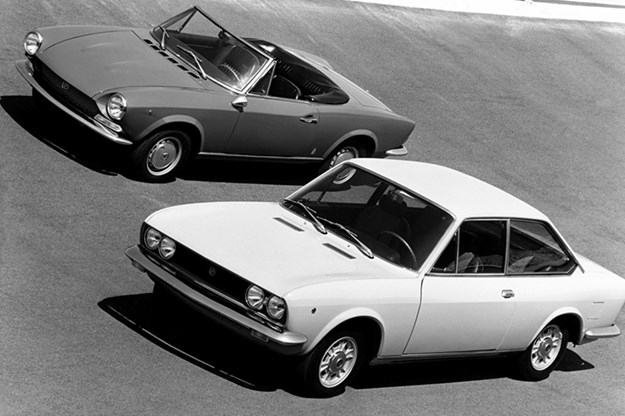
Appearing in 1966, the very modern 124 sedan gave Fiat the platform it needed for a sequence of coupes and these, just like marrying a second cousin, were sufficiently similar to partner the open-top cars.
Australia saw its first 124AC coupes in early 1968 but sales didn’t start until the following year. The Fiat with its fresh lines and huge glass-house cost $3648 – money that would buy an MGB or GTS Monaro with change left over. By 1976 that price would leap past $7000 and shortly afterwards the 124's reign ended.
The Fiat came with a five-speed gearbox, four-wheel disc brakes and a twin-cam engine. Media tests confirmed it would deliver a genuine 163km/h top speed, at which point the optimistic speedometer was hovering around 170km/h but the engine wasn’t nudging the fifth gear redline.
More power was the only thing needed when AC became BC in 1970. Early cars stuck with the AC’s 1.4-litre engine but did bring styling changes. The profile with its crisp lines and tiny roof pillars remained unchanged however its distinctive nose with single headlights was replaced by low-slung, paired lights set in a larger grille. In 1971 and accompanied by a slight price increase the Coupe acquired a 1608cc DOHC engine from Fiat’s 125 sedan. Power reached 81kW and top speed was listed at 180km/h.
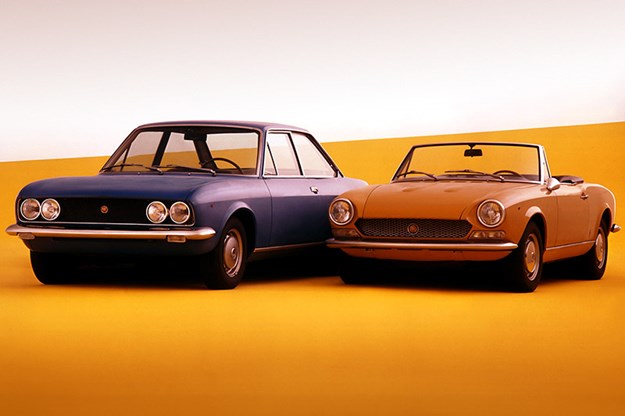
Two years further into the Coupe’s life-span, Fiat uprated the design for a second and final time. The shape of the 124CC grille changed again and included a raised central section. Standard wheels were steel but optional were attractive Cromodora alloys.
Under the bonnet a 1.8-litre engine from the heavier 132 sedan should have provided a solid power boost but emission-controls slated for 1974 ensured the bigger engine developed only 84kW. Spider versions of the 124 were offered In Europe and the USA but not here. Physically, the car shared nothing with 124 Coupes, having its origins in the Pininfarina-bodied 1200 and 1500 convertibles that were first seen in 1959.
The 1966 restyle brought a modernised shape that even today looks lithe and attractive. The Spider would almost certainly have sold well in Australia and other RHD markets had a suitable version been offered.
After many years of imports, open-top 124s in our market are relatively common. Most came from the USA although some have come via the UK, compounding concerns about rust.

Cars built after 1980 were renamed 2000 Spider and when Fiat stepped out of the North American market, Pininfarina sold the cars itself until 1985 under the ‘Spider Azzura’ name.
Coupes in decent but not outstanding order sell for less than $15,000. Most of the available cars are CC models. Cabriolets span a wide range of years and engine types with the early, small-bumper cars usually worth more than fuel injected models. Values remain generally below $30,000.
2019 MARKET VALUE RANGE: Fiat 124 (coupe)
Fair: $3500
Good: $11,000
Excellent: $18,500
(Note: exceptional cars will demand more)
BUYER'S CHECKLIST
BODY & CHASSIS
At the kinds of values that 124 Series Fiats generate, any car that displays serious rust or previous repairs that need re-doing is uneconomic to repair. There is almost nothing made of steel in a Fiat that isn’t prone to rust, so tee up a professional inspection from an experienced restorer for any car you’re considering. Damage to Spider strut towers and the firewall is very costly to fix, as are the mounting points for rear trailing arms. Rust repair panels for the coupe and Spider are available overseas and Spider specialists offer a wide range of new and reproduction body panels. These include new front mudguards from overseas at around A$1400 each and early-design bumpers without rubber buffers that sell locally for $900
ENGINE & TRANSMISSION
Fiat engines aren’t the kind of device that the average hacker with a set of metric spanners can maintain, so look when buying for service history from a shop specialising in this kind of car. Different engines have different issues but common to them all is camshaft wear which causes start-up rattles and affects performance. Carburettor tuning and wear can make a Fiat hard to start and use more fuel than normal. The five-speed gearbox is said to be durable but they can be noisy and send vibrations through the shift-lever.
SUSPENSION & BRAKES
Most significant is the condition of the front cross-member and attachment points for the lower control arms. New cross-members are available, however they are only viable if the mounting points are rust-free or have been plated to restore strength. The suspension used by Spiders and Coupes is different and parts to maintain a Spider will likely need to be specially imported. Springs are intentionally soft but re-rated coils are available and not expensive. Brake parts are available.
INTERIOR & ELECTRICS
Replacement console inserts and instrument surrounds for Coupe and Spider versions are available at reasonable prices from US suppliers, however adding freight, GST and duty can bring nasty surprises. Fiat seats are flat, simple affairs and easily refurbished by a motor trimmer, They aren’t awfully strong either so be wary of cracked frames. Also beware cars with damaged tail-lights. The ones used by Fiat Coupes were shared with some Lamborghinis and replacements cost around $600 each. Check the top on Spiders for fading and rips and make sure the frame moves easily and locks in place.
1968-1985 Fiat 124 Coupe/Spider specs
NUMBER BUILT: 279.672 (coupe)
BODY: all-steel with integrated body/chassis, two door coupe & convertible
ENGINE: 1436, 1608, 1756, 1995cc with overhead camshafts and sidedraft carburettor or fuel-injection (Spider)
POWER & TORQUE: 66kW @ 6500rpm, 108Nm @ 4000rpm (AC coupe)
PERFORMANCE: 0-96km/h 12.9 seconds, 0-400 metres 18.4 seconds (AC coupe)
TRANSMISSION: five-speed manual, three-speed automatic (Spider only)
SUSPENSION: Independent with coil springs, wishbones, telescopic shock absorbers and anti-roll bar (f) Live axle with coil springs, Panhard rod and telescopic shock absorbers (coupe)
BRAKES: disc (f) disc (r) power assisted
TYRES: 165 x 13 radial (AC coupe)
Unique Cars magazine Value Guides
Sell your car for free right here
Get your monthly fix of news, reviews and stories on the greatest cars and minds in the automotive world.
Subscribe

.jpg)


